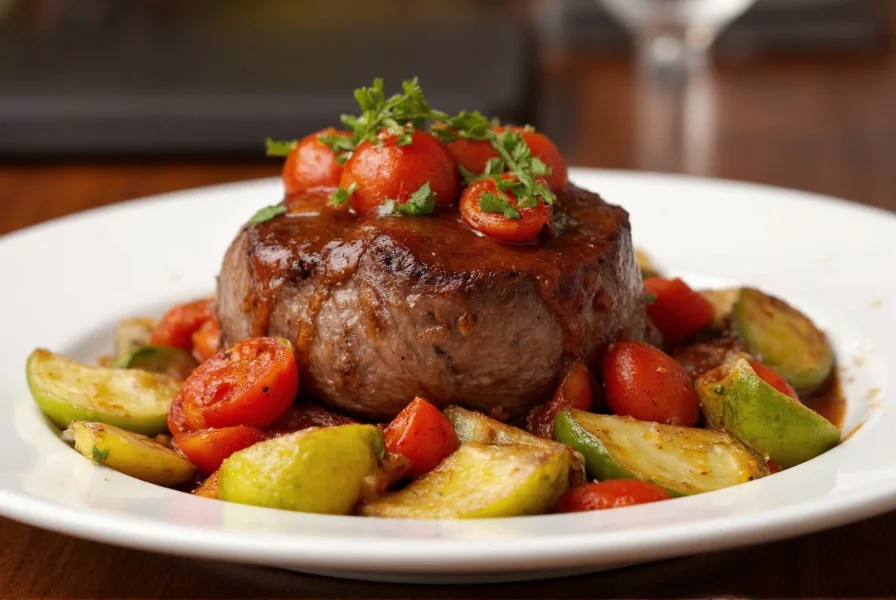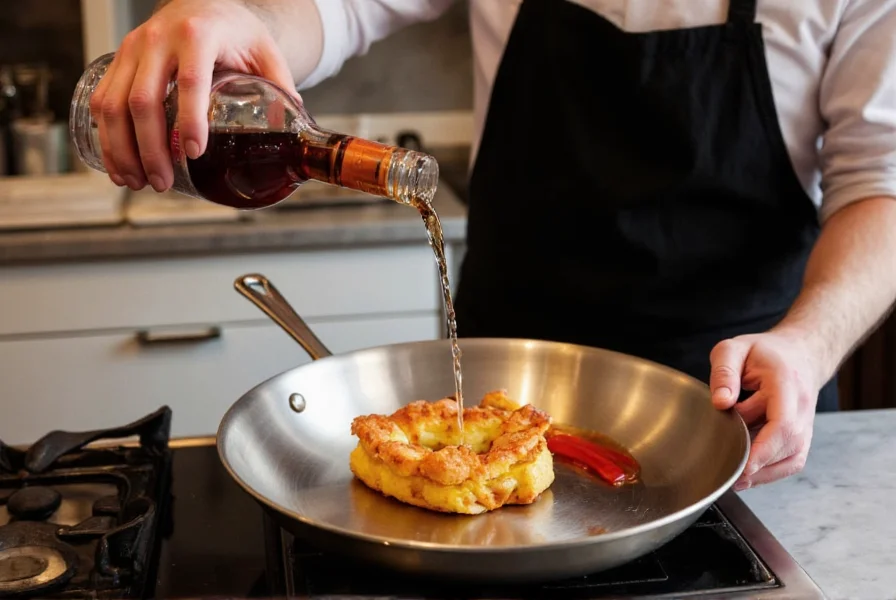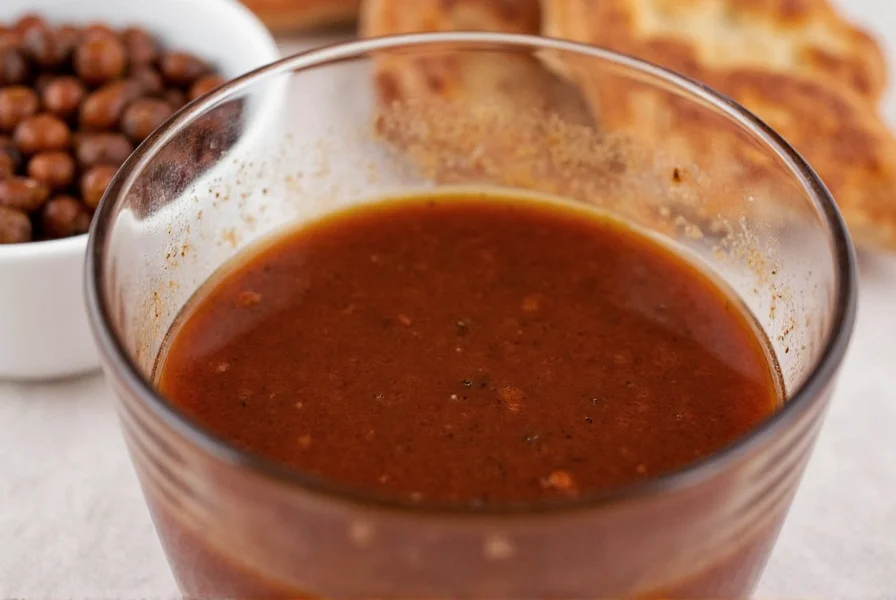Creating an exceptional brandy pepper sauce requires understanding its fundamental components and proper technique. Unlike store-bought versions that often contain artificial ingredients, a homemade preparation delivers superior flavor complexity through careful reduction and emulsification. The magic happens when high-quality brandy's fruit notes meld with freshly cracked black pepper's pungency, creating a sauce that elevates simple proteins into restaurant-quality meals.
Understanding Brandy Pepper Sauce Components
The foundation of authentic brandy pepper sauce consists of just five essential elements, each playing a critical role in the final product:
- Brandy - Provides fruitiness and depth (never use "cooking brandy" which contains salt)
- Freshly cracked black pepper - Delivers aromatic heat (pre-ground pepper lacks volatile oils)
- Stock - Beef or veal stock creates savory backbone (never water)
- Butter or cream - Adds richness and mouthfeel (optional for lighter versions)
- Aromatics - Shallots or onions build flavor complexity
Professional chefs emphasize that the quality of your brandy directly impacts the sauce's character. While premium cognac produces exceptional results, a good VSOP (Very Superior Old Pale) brandy offers the best value for cooking. Avoid cheap "cooking brandies" that contain salt and artificial flavors—these will ruin your sauce's delicate balance.
Classic Brandy Pepper Sauce Recipe
This professional technique yields approximately 1 cup of sauce, perfect for four 8-ounce steaks. The key is patience during reduction—rushing this step creates a harsh, alcoholic flavor.
- Finely mince 1 small shallot and sauté in 1 tablespoon butter until translucent (2-3 minutes)
- Add 2 tablespoons freshly cracked black pepper and cook 30 seconds until aromatic
- Pour in 1/4 cup quality brandy and deglaze the pan, scraping up browned bits
- Reduce brandy by half over medium heat (2-3 minutes)
- Add 1 cup hot beef or veal stock and simmer until reduced to 1/2 cup (8-10 minutes)
- Whisk in 2 tablespoons cold butter until emulsified (or 1/4 cup heavy cream for creamy version)
- Season with salt to taste (sparingly, as stock contains salt)
- Serve immediately over cooked meats
| Component | Quality Indicator | Common Mistake |
|---|---|---|
| Brandy | Clear, fruity aroma without chemical notes | Using salted "cooking brandy" |
| Pepper | Fragrant when cracked, dark color | Pre-ground pepper losing volatile oils |
| Stock | Gelatinous when chilled, rich color | Water or bouillon cubes |
| Final Sauce | Coats the back of a spoon | Thin, watery consistency |
Perfect Pairings for Brandy Pepper Sauce
While steak remains the classic partner, brandy pepper sauce complements numerous proteins when properly matched. The sauce's heat level should correspond to the meat's richness—milder preparations for delicate proteins, bolder versions for robust meats.

Consider these professional pairings:
- Ribeye or New York strip steak - The sauce's heat cuts through marbling
- Pork tenderloin - Complements fruit-based side dishes
- Duck breast - Pairs beautifully with cherry or berry reductions
- Mushroom risotto - Creates a luxurious vegetarian option
- Grilled portobello mushrooms - Vegan adaptation using vegetable stock
Advanced Techniques and Variations
Master chefs employ several professional techniques to elevate basic brandy pepper sauce. For a restaurant-quality finish, add 1 teaspoon of Dijon mustard during the final emulsification for enhanced complexity without noticeable mustard flavor.
Those seeking how to make brandy pepper sauce without cream can achieve richness through proper reduction and the monter au beurre technique—whisking in cold butter at the end. For dairy-free versions, substitute 1 tablespoon of cashew cream per serving.
Regional variations include:
- French style - Brandy, shallots, demi-glace, minimal cream
- American steakhouse - Heavier cream content, more pronounced pepper
- Modern interpretation - Added smoked paprika or chipotle for depth
Storage and Reheating Guidelines
Proper storage tips for homemade brandy pepper sauce ensure maximum shelf life. Cool completely before transferring to an airtight container. Refrigerated sauce keeps for 3-4 days. For longer storage, freeze in ice cube trays then transfer cubes to freezer bags (keeps 2 months).
When reheating, use low heat and add a splash of stock or water if too thick. Never boil reheated sauce as this causes butter to separate. For creamy brandy pepper sauce variations, whisk constantly during reheating to maintain emulsion.
Common Mistakes to Avoid
Many home cooks make critical errors when preparing homemade brandy pepper sauce recipe attempts. The most frequent issue is adding brandy directly to high heat, causing alcohol to burn off harshly rather than mellowing through proper reduction.

Additional pitfalls include:
- Using pre-ground pepper instead of freshly cracked
- Adding salt before reducing stock (concentrates saltiness)
- Over-reducing the sauce, making it bitter
- Using water instead of quality stock
- Adding butter at too high a temperature
Remember that brandy pepper sauce for steak should enhance, not dominate, the meat's natural flavor. The ideal preparation provides a subtle warmth that lingers pleasantly without overwhelming heat.
Frequently Asked Questions
Can I make brandy pepper sauce without alcohol?
Yes, substitute brandy with equal parts grape juice and water, plus 1/4 teaspoon vanilla extract. While not identical, this creates a similar fruitiness. For depth, add 1 teaspoon mushroom powder to compensate for lost complexity.
Why does my brandy pepper sauce taste bitter?
Bitterness usually comes from over-reducing the sauce or burning the brandy. Reduce brandy only until it forms a syrupy consistency (about 2-3 minutes), not until completely evaporated. Also ensure you're using freshly cracked pepper, as old pre-ground pepper develops bitter compounds.
How can I thicken my brandy pepper sauce properly?
The proper thickening occurs through reduction, not thickeners. Simmer until the sauce coats the back of a spoon (nappé stage). If too thin, continue reducing stock before adding butter. Never use flour or cornstarch, as these create a gummy texture that masks the delicate brandy flavor.
What's the difference between brandy pepper sauce and peppercorn sauce?
Traditional peppercorn sauce uses crushed green, pink, or mixed peppercorns in a demi-glace base without brandy. Brandy pepper sauce specifically features brandy as a primary component with black pepper, creating a fruitier, less acidic profile. Many modern recipes blend these concepts by adding brandy to peppercorn sauces.
Can I use whiskey instead of brandy in pepper sauce?
Yes, but the flavor profile changes significantly. Whiskey adds smokier, grain-forward notes compared to brandy's fruitiness. For best results, use a smooth bourbon rather than peaty Scotch. Reduce the amount by 25% since whiskey's stronger flavor can overwhelm the sauce. Brandy remains preferred for its natural compatibility with pepper's floral notes.











 浙公网安备
33010002000092号
浙公网安备
33010002000092号 浙B2-20120091-4
浙B2-20120091-4